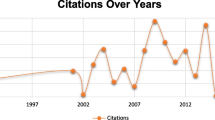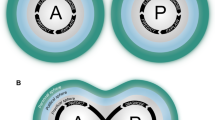Abstract
Globally, 50% of the world’s population lives in urban areas. In Europe, 72% of people live in cities, and this percentage is expected to rise to 80% by 2050. Cities are the powerhouses of economic growth, innovation and employment. Nevertheless, growing urban agglomerations also generate challenges in terms of physical and administrative infrastructures, environmental sustainability, social inclusion, and health. As growing urbanisation is challenging the way we live and interact with the natural environment, Eurisy launched an initiative to promote the use of satellite applications to make our cities healthier, cleaner, safer, and more efficient. The initiative aims to foster the exchange of expertise and know-how among city managers, SMEs and stakeholders, to identify challenges to the access and use satellite data and signals, and to make recommendations to service providers, space agencies and stakeholders on how to facilitate the use of satellite-based services at the city level. Indeed, satellite imagery is already employed by city managers, for example to identify urban heat islands, to make predictions about the impact of different traffic scenarios on air quality and to intervene on areas where construction materials retain too much heat. Satellite navigation is crucial in providing real-time information on public transport and numerous apps rely today on satellite navigation signals, e.g. to help persons with disabilities in their daily movements. Satellite communication is also used in cities, e.g. to connect rescue teams when other connections are down, or to perform health checks in public spaces. Satellites alone cannot fight global warming or inequalities, but they offer data and signals that can improve life in cities and that should hence be fully exploited. Through the “Space for Cities” initiative, Eurisy aims at promoting the use of satellite-based services to make our cities healthier, safer, more inclusive and resilient, as envisaged by the United Nations Sustainable Development Goal 11.
Eurisy is a non-for-profit association based in France. Founded by space agencies, Eurisy promotes peaceful uses of space technology to enhance social and environmental well-being.
Access this chapter
Tax calculation will be finalised at checkout
Purchases are for personal use only
Similar content being viewed by others
Notes
- 1.
OECD (2016), Subnational governments in OECD countries: Key data (brochure), OECD, Paris, www.oecd.org/regional/regional-policy Database: http://dx.doi.org/10.1787/05fb4b56-en © OECD 2016. Accessed 12 Mar 2018.
- 2.
European Commission, Regional Policy, InfoRegio (2017) Urban Development. http://ec.europa.eu/regional_policy/en/policy/themes/urban-development/. Accessed 12 Mar 2018.
- 3.
European Commission—DG ENV, Assessment of separate collection schemes in the 28 capitals of the EU. Final Report. Reference: 070201/ENV/2014/691401/SFRA/A2. 13 November 2015 Brussels. Accessed 12 Mar 2018.
- 4.
United Nations Human Settlements Programme, Global Report on Human Settlement 2011. Hot Cities: battle-ground for climate change. http://mirror.unhabitat.org/downloads/docs/E_Hot_Cities.pdf. Accessed 12 Mar 2018.
- 5.
Bill Below, OECD Directorate for Public Governance and Territorial Development, Habitat III and the challenge of urbanisation in five charts, 20 October 2016, OECD Insights, Debate the issue. http://oecdinsights.org/2016/10/20/habitat-iii-and-the-challenge-of-urbanisation-in-five-charts/. Accessed 12 Mar 2018.
- 6.
OECD (2016), Making Cities Work for All: Data and Actions for Inclusive Growth, OECD Publishing, Paris. http://dx.doi.org/10.1787/9789264263260-en. Accessed 12 Mar 2018.
- 7.
Eurisy (2016), Satellites for Society: Reporting on operational uses of satellite-based services in the public sector, Paris (France), March 2016. ISBN 978-2-9551847-1-4. https://www.eurisy.org/data_files/publications-documents/28/publications_document-28.pdf?t=1467808834. Accessed 12 Mar 2018.
- 8.
International Ecocity Standards. http://www.ecocitystandards.org/. Accessed 12 Mar 2018.
- 9.
International Ecocity Standards. http://www.ecocitystandards.org/. Accessed 12 Mar 2018.
- 10.
World Health Organization 2017, Don’t pollute my future! The impact of the environment on children’s health. Geneva. Licence: CC BY-NC-SA 3.0 IGO. http://apps.who.int/iris/bitstream/10665/254678/1/WHO-FWC-IHE-17.01-eng.pdf. Accessed 12 Mar 2018.
- 11.
PBL Netherlands Environmental Assessment Agency, Trends in global CO2 emissions: 2015 Report, The Hague. http://edgar.jrc.ec.europa.eu/news_docs/jrc-2015-trends-in-global-co2-emissions-2015-report-98184.pdf?utm_source=Dec+2016+Newsletter&utm_campaign=Ecocities+Emerging+Dec+2016&utm_medium=email. Accessed 12 Mar 2018.
- 12.
European Union, 2013, Building a Green Infrastructure for Europe. ISBN 978-92-79-33428-3. http://ec.europa.eu/environment/nature/ecosystems/docs/green_infrastructure_broc.pdf. Accessed 12 Mar 2018.
- 13.
Official Journal of the European Union, 22.11.2008, Directive 2008/98/EC of the European Parliament and of the Council of 19 November 2008 on waste and repealing certain Directives. http://eur-lex.europa.eu/LexUriServ/LexUriServ.do?uri=OJ:L:2008:312:0003:0030:EN:PDF. Accessed 12 Mar 2018.
- 14.
European Commission (2018), Mobility and Transport, Clean Transport Urban Transport Urban Mobility. https://ec.europa.eu/transport/themes/urban/urban_mobility_en. Accessed 12 Mar 2018.
- 15.
Sustainable Development Knowledge Platform (2018) Sustainable Development Goal 11 Make cities and human settlements inclusive, safe, resilient and sustainable. https://sustainabledevelopment.un.org/sdg11. Accessed 12 Mar 2018.
Author information
Authors and Affiliations
Corresponding author
Editor information
Editors and Affiliations
Rights and permissions
Copyright information
© 2020 Springer Nature Switzerland AG
About this chapter
Cite this chapter
Fiore, G.M. (2020). Space for Cities: Satellite Applications Enhancing Quality of Life in Urban Areas. In: Ferretti, S. (eds) Space Capacity Building in the XXI Century. Studies in Space Policy, vol 22. Springer, Cham. https://doi.org/10.1007/978-3-030-21938-3_22
Download citation
DOI: https://doi.org/10.1007/978-3-030-21938-3_22
Published:
Publisher Name: Springer, Cham
Print ISBN: 978-3-030-21937-6
Online ISBN: 978-3-030-21938-3
eBook Packages: Social SciencesSocial Sciences (R0)




